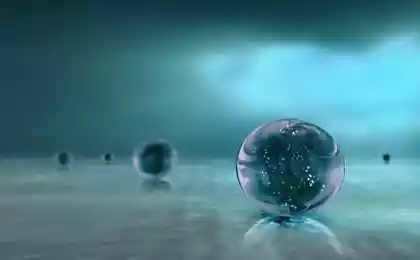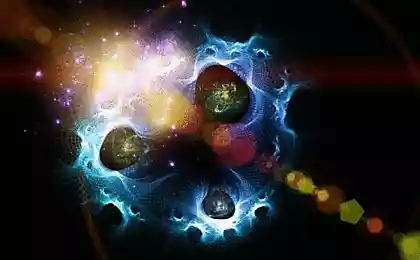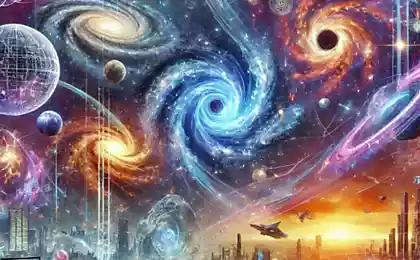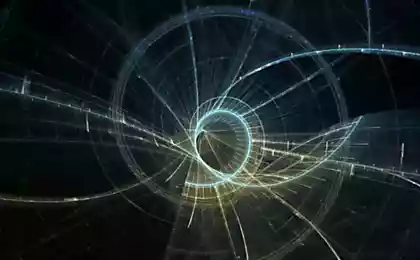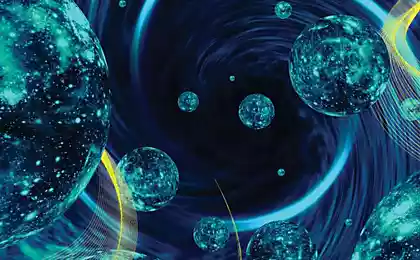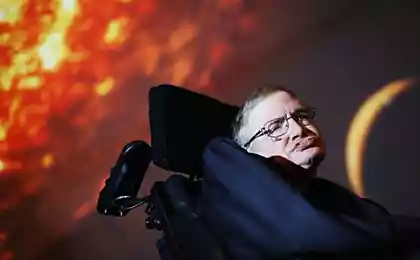590
When parallel worlds collide, quantum mechanics is born

In a parallel universe, never fell, the asteroid that destroyed the dinosaurs, Australia was never colonized by the Portuguese. For a long time, parallel universes were a staple of science fiction. But if they're real?
In a curious work, published this week in Physical Review X, Dr Michael Hall from Griffith University and Dr Dirk-Andre Dechert, University of California suggested that parallel universes are not only real, but not quite parallel — they can "run".
According to their theory, the interaction between neighboring worlds is the source of all the strange features of quantum mechanics, defined empirically.
Many-worlds interpretation of quantum Mechanicstown of parallel worlds in quantum mechanics — the idea itself is not new. This is one of the basic concepts one of the leading interpretations of quantum mechanics is the "many-worlds" interpretation, 1957.
"Today, quantum mechanics is the most applicable and successful physical theory, why not think about her interpretations is impossible. And there are several reasons. First, its formalism is extremely separated from everyday experience. It is enclosed in a "wave function", which is similar to the wave, not in ordinary three-dimensional space, and in space with infinite dimensions. Secondly, the so-called bell correlations, which can be experimentally measured by means of remote quantum systems originate from a common source, disrupting the usual local laws of cause and effect".
According to scientists, this means that the formalism of wave functions cannot be replaced by anything in the usual sense of space.
There are several competing interpretations of quantum mechanics, and each of them gives a particular picture of the ultimate nature of reality. But each image is deeply strange at its core because of the weirdness of quantum mechanics itself.
The strangeness of the "many-worlds" interpretation is that any time any quantum system is observed in the Universe, that universe "branches" into a bunch of new universes, one for each possible outcome of the observation.
Many-worlds interpretation has been criticized because it does not specify exactly when. Thus, it is very vague determines how many worlds exist in a certain time, and the world itself is fuzzy in its properties, which are described by the wave function.
In addition, due to the different observation results derived with different probability, many-worlds interpretation suggests that different worlds have different "weight" — some worlds should be more important than others, even if they all can be real.
Finally, as soon as they arise, these worlds do not interact, therefore, some critics believe that such worlds are purely hypothetical, and therefore useless.
Multiple Mironova theory also involves many worlds but there the similarities with the usual "many-worlds" interpretation ends. First, the researchers assume a fixed, but a truly gigantic number of worlds. They exist continuously through time — there is no branching.
Secondly, these worlds are not "vague" — they have well-defined properties. In the approach of scientists world determined the exact position and velocity of every particle in the world — there is no Heisenberg's uncertainty principle, which would have belonged to a separate world. According to the theory, if there is only one world, it was developed in strict accordance with Newtonian mechanics, not quantum.
Thirdly, these worlds interact, and this interaction is the source of all quantum effects. In particular, there is a repulsive force of a very specific type between the worlds with an almost identical configuration (i.e., in which each particle is in a similar position with neighboring particles of the world). This "interstitial" power prevents that the next worlds can ever come to the same configuration, and, as a rule, contribute to the fact that the worlds differ in this.
Fourth, each of these worlds are equally real. The probability is included in the theory only because the observer made of particles in a particular world does not know for sure which of the many worlds. So it will assume the same probability for each member of the set of worlds comparable to his experience (which will be mediocre due to the fact that the observer is a macroscopic collection of particles). After the experiment, the observer can find out more about how the world is, and hence to exclude a number of worlds from the total list of probable hospitable hosts.
All of the above are combined in the theory of many interacting worlds. In this theory, nothing more. No wave function, no special role of the observer and the fundamental differences between macro - and microscopic.
However, scientists believe that their approach allows to reproduce all the standard features of quantum mechanics, including dvuhmetrovoy interference, barrier tunnelling, unpredictability and the bell correlations.
Consequences and primeneniye called his theory more "approach" than "interpretation" because for any finite number of worlds it is only an approximation to quantum mechanics. Nevertheless, it represents an exciting opportunity: to verify the existence of these other worlds.
The ability to compare quantum evolution on the example of a finite number of worlds can also be very useful. In particular, on its basis it is possible to simulate molecular dynamics, which are important for understanding chemical reactions and effects of drugs.
Quantum mechanics has always been mysterious because of the subtle but profound deviations from Newtonian mechanics. The fact that these deviations can be associated with easy interaction essentially Newtonian worlds with the nearby parallel worlds — a fundamentally new solution to the quantum puzzles.
Source: hi-news.ru

